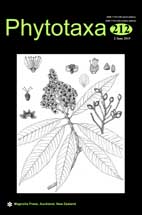Abstract
The family Apiaceae is in the process of major systematic rearrangements at different taxonomic levels. In particular, molecular phylogenies of the tribe Apieae are generating heterogeneous assemblages of morphologically diverse taxa. We analysed a nearly complete taxonomic sample to evaluate the phylogenetic relationships within this tribe, and to review the most informative taxonomic characters of the fruit. Nuclear (ITS) and plastid (rps16) sequences allowed inferring phylogenetic relationships of species and genera of Apieae. Fruit morphology was studied with stereomicroscope, including overall observations and anatomical cross-sections. Both phylogenetic reconstructions were incongruent. Based on the ITS phylogeny, Apieae is arranged in two main clades, one containing most species of Stoibrax and the other clade formed by the rest of species of the tribe grouped into three well-supported subclades. The rps16 phylogeny shows the Anethum alliance to be basal, recovered in a weakly supported clade sister to the rest of the tribe, and a clade subdivided in six well-supported subclades. Nevertheless, three genera are revealed to be non-monophyletic in both phylogenetic reconstructions: Anethum, Seseli and Stoibrax. In the interest of the recognition of natural groups within Apieae, we proposed to create three new genera to accommodate the species that split from the three polyphyletic genera: Canaria for Seseli webbii, Modesciadium for Stoibrax involucratum, and Schoenoselinum for Anethum foeniculoides.

